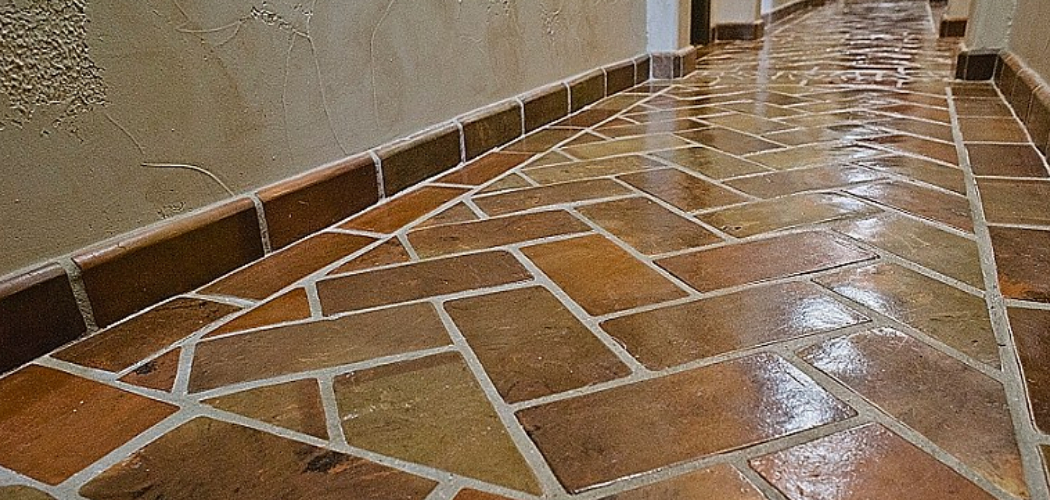Maintaining the timeless charm of Saltillo tile floors requires more than just routine sweeping. These distinctive terracotta tiles, known for their warm, earthy hues, originate from Mexico and add a rustic elegance to any space.
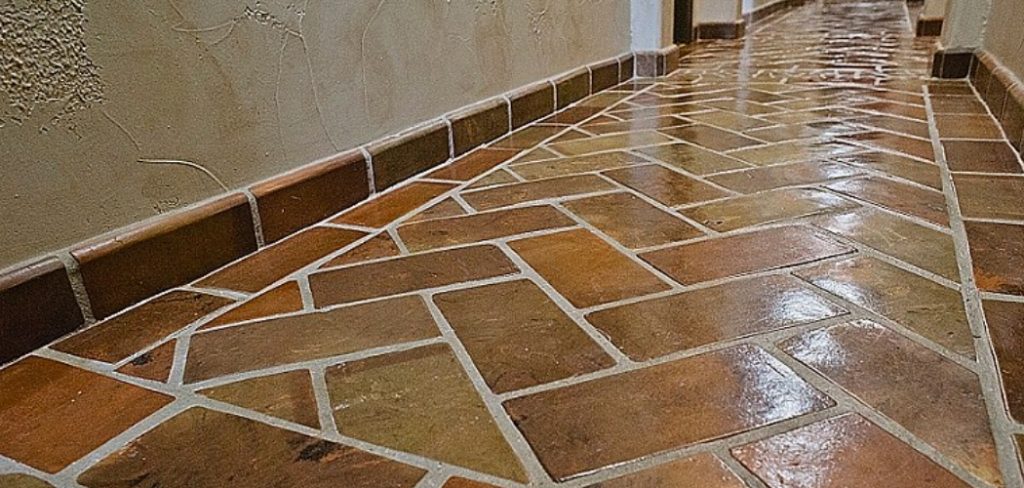
However, their porous nature makes them susceptible to dirt and stains, necessitating a specialized cleaning approach. In this guide, we delve into the art of how to clean saltillo tile floors, offering a comprehensive exploration of the dos and don’ts.
From the initial steps of gentle sweeping to the targeted removal of stubborn stains, we unravel the secrets to preserving the beauty and longevity of your Saltillo tiles. Whether you’re a seasoned homeowner or a newcomer to the world of tile care, our detailed insights will empower you to navigate the cleaning process with confidence, ensuring that your Saltillo tile floors remain a stunning testament to craftsmanship and cultural heritage.
What are Saltillo Tile Floors?
Saltillo tiles are a type of terracotta tile that is not only distinctive but also rich in history, originating from Saltillo, Coahuila, Mexico. Renowned for their natural clay composition, these tiles are traditionally handcrafted, making each piece uniquely textured with a slightly irregular shape.
The charm of Saltillo tiles lies in their warm, inviting hues, ranging from light oranges to deep reds, which can add an ambiance of warmth and rustic elegance to any setting. Their unglazed surface contributes to their natural, earthy appearance, but it also means they require specific maintenance to retain their beauty and durability over time.
Importance of Cleaning Saltillo Tile Floors
Cleaning Saltillo tile floors is crucial not only for maintaining their aesthetic appeal but also for preserving their longevity. Due to their porous nature, these tiles can absorb liquids and stains more readily than other types of flooring. If left uncleaned, spills can seep into the tiles, leading to discoloration or even damage over time.
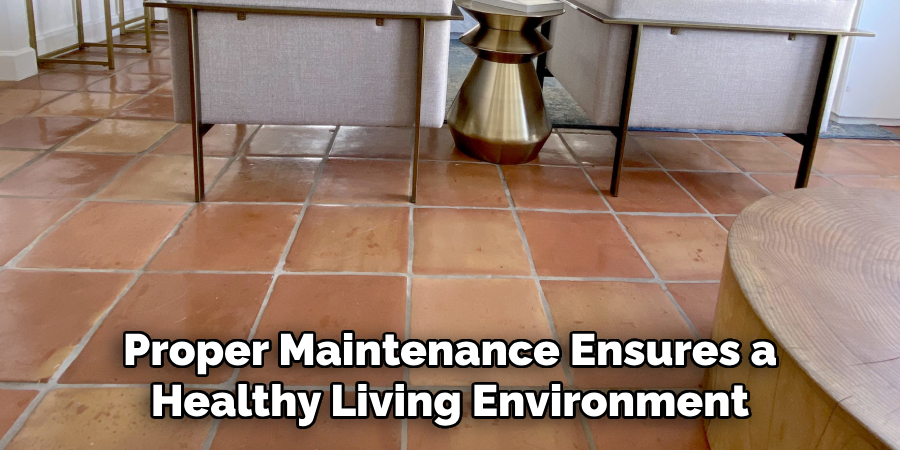
Regular cleaning also prevents the build-up of dirt and grime, which can dull the surface of the tiles and mask their natural beauty. Additionally, proper maintenance ensures a healthy living environment by removing allergens and bacteria that can accumulate on the floors. By prioritizing the cleanliness of your Saltillo tile floors, you’re investing in the preservation of their unique character and ensuring that they continue to enrich your home with their warmth and rustic charm.
Characteristics of Saltillo Tiles
Saltillo tiles are celebrated for their distinct attributes, which set them apart from other types of flooring. Key characteristics include:
- Natural Composition: Crafted from natural clay found in the Saltillo region, these tiles are eco-friendly and embody a connection to the earth.
- Variability: Each tile is hand-shaped and sun-dried, resulting in variations in size, shape, and color. This handmade quality ensures that no two tiles are exactly alike, offering a truly unique flooring option.
- Color Palette: The colors of Saltillo tiles can vary widely, from vibrant terracotta reds and oranges to softer, more muted hues. This rich color range enables them to blend seamlessly into various decor styles, enhancing both traditional and contemporary spaces.
- Porous Surface: Their unglazed, porous nature makes them particularly susceptible to moisture and stain absorption, necessitating specific care strategies to maintain their appearance over time.
- Thermal Properties: Saltillo tiles have excellent thermal properties, staying cool to the touch in hot climates and retaining warmth in cooler environments, contributing to their popularity in a variety of geographical locations.
Understanding these characteristics is crucial for anyone considering Saltillo tiles for their home. It not only aids in the selection process but also informs the maintenance regimen necessary to preserve their distinct beauty and functional qualities.
Common Issues with Saltillo Tile Floors
Despite their beauty and durability, Saltillo tile floors can be prone to certain issues if not properly maintained. Understanding these common problems can help homeowners take preventative measures to protect their floors. Here are some of the most prevalent issues associated with Saltillo tile floors:
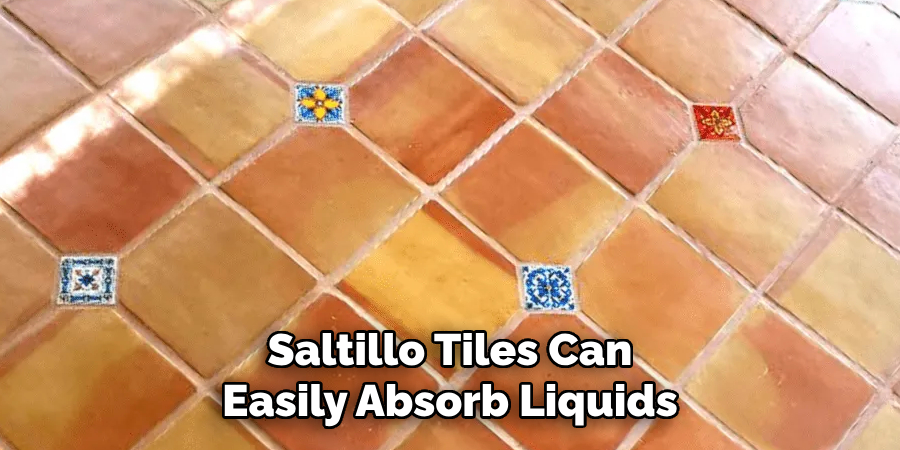
- Staining: Due to their porous nature, Saltillo tiles can easily absorb liquids, leading to potential staining. Spills, especially those from colored liquids or acidic substances, should be cleaned up promptly to avoid permanent discoloration.
- Efflorescence: This is a white, powdery residue that can form on the surface of Saltillo tiles. It results from water bringing soluble salts to the surface as it evaporates. While not harmful, efflorescence can mar the appearance of the tiles and requires specific cleaning methods to remove.
- Cracking or Chipping: The terracotta material of Saltillo tiles, while sturdy, can be susceptible to cracking or chipping if subjected to heavy impacts or if the tiles were not properly installed.
- Wear Patterns: Over time, frequent foot traffic can lead to visible wear patterns on Saltillo tiles. Areas of high traffic may show signs of dullness or surface abrasion compared to less traveled parts of the floor.
- Mold and Mildew: In environments with high humidity or in cases where water sits on the tiles for extended periods, Saltillo tiles can become a breeding ground for mold and mildew, particularly in the grout lines between the tiles.
Addressing these issues promptly and employing a routine maintenance schedule can significantly reduce the occurrence of these common problems, ensuring that Saltillo tile floors retain their distinctive beauty and remain in good condition for years to come.
Factors to Consider Before Cleaning Saltillo Tile Floors
Before initiating the cleaning process for Saltillo tile floors, it’s essential to consider several factors to ensure that the method chosen is suitable and will not cause damage to the tiles. Here are key factors to keep in mind:
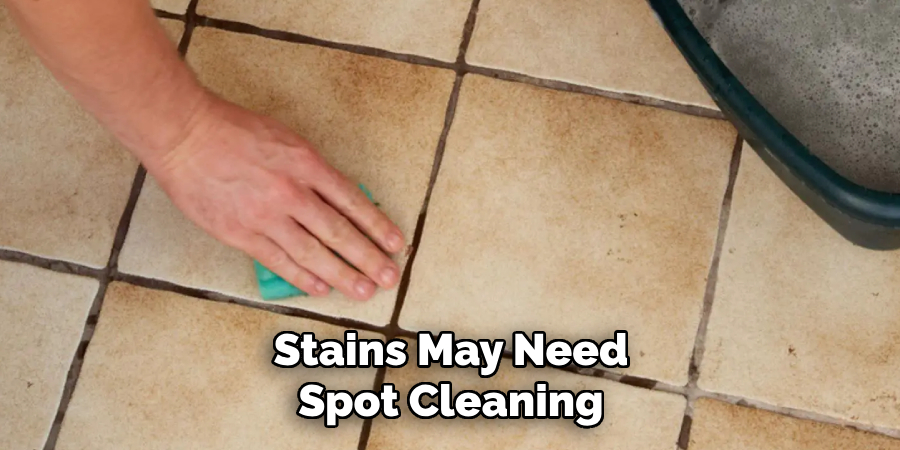
- Current Condition of Tiles: Assess the current state of your Saltillo tiles. Look for any cracks, chips, or signs of wear that could affect how you approach cleaning. Damaged tiles may require more gentle handling or professional repair before thorough cleaning.
- Type of Sealant Used: Determine the type of sealant previously applied to your Saltillo tiles, if any. Water-based and solvent-based sealants may react differently to various cleaning agents. Using the wrong cleaner could strip the sealant, leaving tiles vulnerable to damage.
- Level of Soil: Evaluate the level of dirt and grime build-up on your tile floors. This will inform the intensity of the cleaning needed—light dusting, thorough washing, or deep cleaning.
- Presence of Stains or Efflorescence: Identify specific issues such as stains or efflorescence that require targeted treatments. Stains may need spot cleaning with particular solutions, while efflorescence has its removal methods.
- Room Usage and Humidity Levels: Consider the room’s function and humidity levels where the Saltillo tiles are installed. High humidity areas like bathrooms or kitchens may have different cleaning needs compared to living areas or bedrooms.
Taking these factors into account before cleaning can help you choose the most appropriate methods and products, protecting your Saltillo tile floors from potential damage and ensuring their longevity and beauty.
10 Methods How to Clean Saltillo Tile Floors
1. Regular Sweeping and Dusting:
The foundation of Saltillo tile care lies in regular sweeping and dusting. Use a soft-bristle broom or a vacuum cleaner with a soft brush attachment to remove loose dirt and debris. This prevents scratches and preserves the surface integrity of the tiles.
In addition to regular sweeping and dusting, it is also important to mop the tiles regularly. This will help remove any accumulated dirt or grime that may have settled on the surface of the tiles. Use a damp mop with a mild soap solution to gently clean the tiles. Avoid using harsh chemicals or abrasive cleaners as they can damage the tiles.
2. Gentle Mopping with pH-Neutral Cleaner:
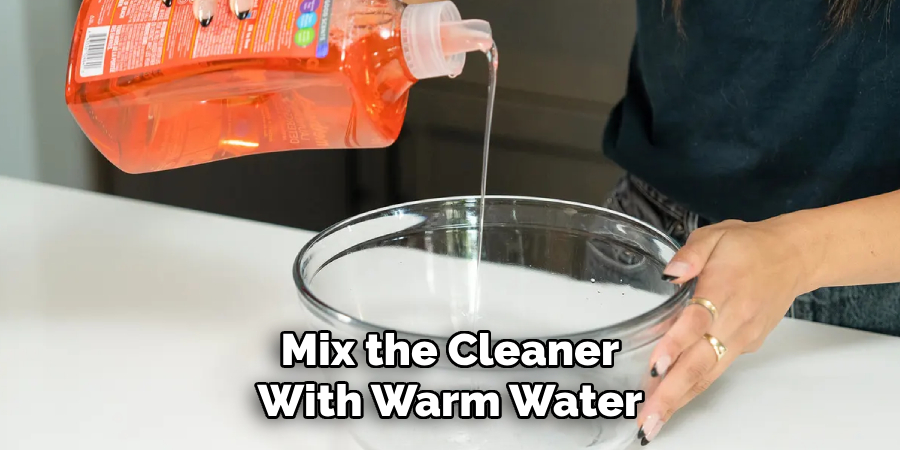
Opt for a pH-neutral cleaner when mopping Saltillo tiles. Mix the cleaner with warm water, ensuring it’s not too concentrated. Excessive acidity or alkalinity can damage the tiles. Mop the floor using a soft mop or a microfiber cloth to maintain the tiles’ natural patina.
Besides using a pH-neutral cleaner, there are other tips you can follow to ensure gentle mopping of your Saltillo tiles. One important tip is to avoid using harsh chemicals or abrasive cleaners on the tiles. These products can strip away the natural sealant and cause damage to the tiles over time.
3. Avoid Harsh Chemicals:
Steer clear of harsh chemicals, as they can erode the sealer and compromise the tiles’ integrity. Acidic or abrasive cleaners should be avoided, as they may lead to discoloration or etching. Stick to mild, Saltillo tile-friendly cleaning solutions. Additionally, avoid using tools or equipment that may scratch or damage the tiles.
Consider using natural cleaning alternatives such as vinegar and baking soda for routine maintenance. These gentle yet effective ingredients can help remove dirt and grime without causing harm to your Saltillo tiles. You can also use a soft-bristled brush or sponge to gently scrub away any stubborn stains.
4. Stain Spot Treatment:
Tackle stains promptly with targeted spot treatment. Create a paste using baking soda and water, applying it to the stained area. Allow it to sit for 15-20 minutes before gently scrubbing with a soft brush. Rinse thoroughly and pat dry to prevent water spots. For tougher stains, try using hydrogen peroxide or white vinegar as an alternative paste.
Additionally, consider using a stain remover product specifically designed for the type of fabric or surface. These products often contain enzymes that break down and remove tough stains without damaging the material.
5. Seal the Tiles Regularly:
The porous nature of Saltillo tiles makes them susceptible to stains and moisture absorption. Regularly applying a penetrating sealer creates a protective barrier, preventing liquids and dirt from penetrating the surface. Ensure to follow the manufacturer’s recommendations for resealing intervals. Generally, it is recommended to reseal Saltillo tiles every 1-2 years, depending on foot traffic and exposure.
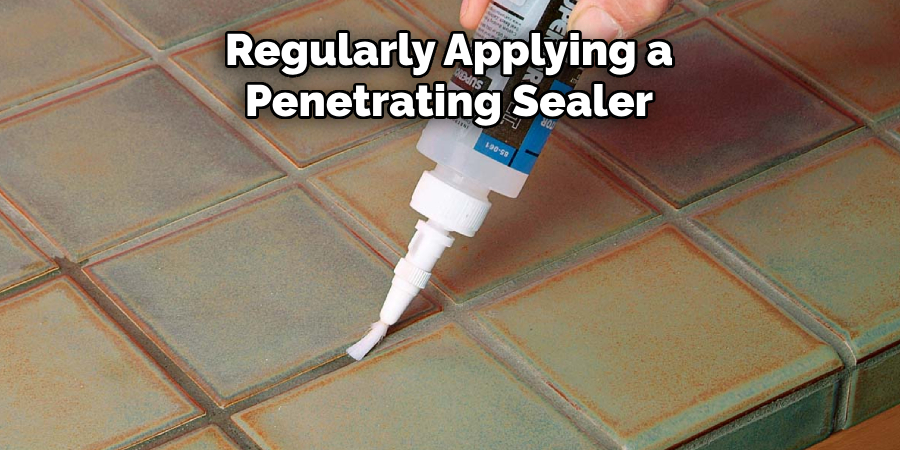
Additionally, sealing the tiles can enhance their color and shine, giving them a more polished appearance. It also helps to prevent discoloration or fading caused by UV rays from sunlight. This is especially important for outdoor Saltillo tile installations.
6. Deep Cleaning with Saltillo-Safe Solutions:
Periodically, engage in a deeper cleaning routine. Mix a gentle Saltillo-specific cleaner with warm water and use a soft brush or an electric floor scrubber with soft pads. Work in small sections, ensuring thorough coverage without allowing the solution to dry on the tiles. Rinse the area with clean water and dry with a soft cloth or mop.
For tougher stains, spot treat with a more concentrated mixture of Saltillo-safe cleaner and water. Allow the solution to sit for a few minutes before gently scrubbing with a soft brush. Rinse and repeat as needed until the stain is removed.
Another option for deep cleaning is steam cleaning. However, it is important to use a steam cleaner that is safe for use on Saltillo tiles. Always test in an inconspicuous area first and make sure to follow the manufacturer’s instructions.
7. Steam Cleaning Caution:
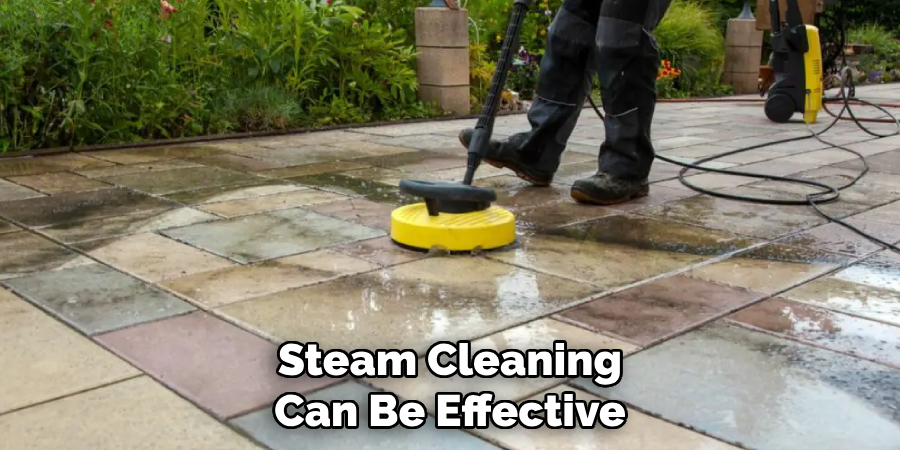
While steam cleaning can be effective for some flooring types, it’s not always suitable for Saltillo tiles. The intense heat and moisture can damage the tiles and grout. If you opt for steam cleaning, use it sparingly and at a low-pressure setting to avoid potential issues. Additionally, be sure to test a small and inconspicuous area first before proceeding with the entire cleaning process.
Another caution when it comes to steam cleaning is the possibility of loosening or lifting tiles. This can occur if the tiles are not properly sealed or if there are cracks in the grout. Make sure to inspect your Saltillo tile flooring before using steam cleaning and address any necessary repairs or sealing beforehand.
In general, it’s always best to consult a professional before attempting to clean Saltillo tiles with steam. They will be able to assess the condition of your flooring and provide proper guidance on whether or not steam cleaning is a suitable option.
8. Grout Cleaning Techniques:
Pay attention to grout lines as they can harbor dirt and stains. Create a mixture of baking soda and water to form a paste. Apply it to the grout lines, scrub gently with a toothbrush, and rinse thoroughly. Avoid using abrasive tools that may scratch the tiles. For tougher stains, try mixing equal parts of baking soda and hydrogen peroxide. Let it sit for 10 minutes before scrubbing and rinsing.
Grout is the material that is used to fill the gaps between tiles. It can be made of a variety of materials such as cement, epoxy, or polymer-based grouts. However, all types of grout are susceptible to dirt and stains over time. That’s why it’s important to regularly clean and maintain grout lines to keep them looking fresh and new.
One of the most common DIY techniques for cleaning grout is using a mixture of baking soda and water. Baking soda, also known as sodium bicarbonate, has natural properties that make it a great cleaner. When mixed with water, it forms a paste that acts as a gentle abrasive to lift dirt and stains from grout lines. This method is safe for all types of grout and tiles.
9. Preventative Measures:
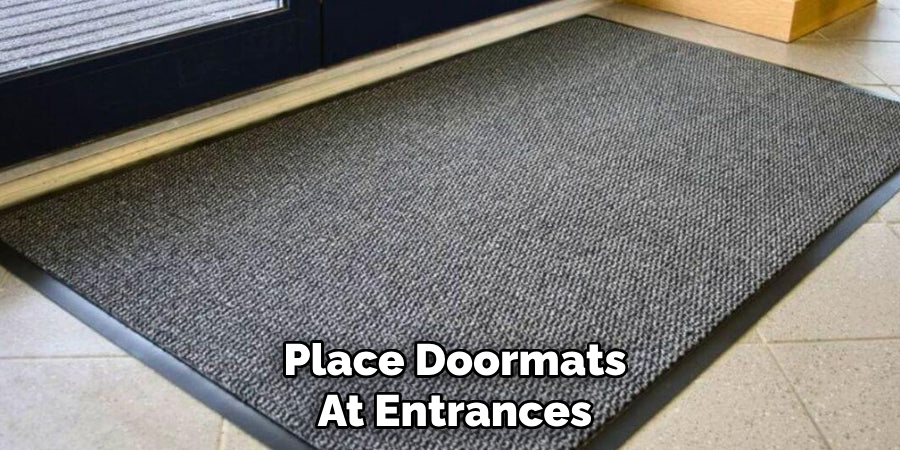
Implement preventative measures to reduce the risk of dirt and stains. Place doormats at entrances to trap dirt, and use furniture protectors to prevent scratches. Encourage family and guests to remove shoes before walking on Saltillo tile floors. Regularly sweep and mop the floor to prevent dirt buildup.
Additionally, consider using a sealant to protect against stains and damage. This can be done every few years or as needed, depending on the level of foot traffic in the area. Be sure to follow manufacturer instructions when applying sealant.
10. Professional Restoration and Maintenance:
If your Saltillo tiles have endured years of wear and tear, consider professional restoration services. Experts can assess the condition of your tiles, perform necessary repairs, and apply a fresh layer of sealer to revive the tiles to their original glory. Additionally, regular maintenance can help prolong the lifespan of your Saltillo tiles and prevent costly restoration in the future.
Saltillo tile restoration typically involves deep cleaning, regrouting, and resealing. The process starts with a thorough inspection of the tiles to identify any cracks or damages that need repair. Once identified, these areas are carefully filled and sealed to ensure a smooth surface. Next, the tiles are deep cleaned using specialized equipment and techniques to remove any built-up dirt, grime, or stains. Finally, a new layer of sealer is applied to protect the tiles from future damage.
Conclusion
In conclusion, maintaining the beauty and longevity of Saltillo tile floors demands diligence and care. By following a systematic cleaning regimen, homeowners can preserve the charm and durability of these unique tiles for years to come. Through thorough preparation, employing appropriate cleaning methods, and addressing stains promptly, one can ensure the continued vibrancy of Saltillo floors.
Additionally, the application of sealants and regular maintenance routines serve as proactive measures against wear and tear. Understanding the nuances of Saltillo tile care not only enhances the aesthetic appeal of living spaces but also safeguards the investment in these distinctive flooring materials. Hopefully, this article gave you some helpful tips about how to clean saltillo tile floors successfully, so now that you have the proper knowledge on how to get the job done, why not give it a try today?
